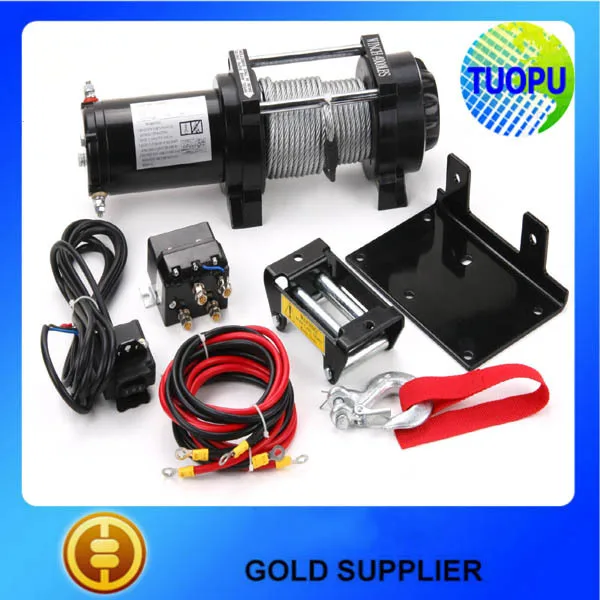Marketing
Hook up hydraulic winch - Vinkovci
Description

Dating Site: Hook up hydraulic winch
The hose that is clamped on is your low pressure return line. If the latter case then there will be another hose from the pump to the loader valve. With this in mind I set out to find the ultimate winch.

In your case, disconnect the inlet to the third function valve this is the pump outlet and connect it to your valve's inlet. Water won't affect the function of the circuit breaker, but if it makes you feel better put some shrink wrap on everything shown. It is a very economical choice at 740 dollars I think plus may be 120 for the spool valve.

Description - Weitere Informationen und Einstellungen finden Sie im. This ratio determines the load angle, and all hooklift hoist systems indicate a recommended range of body lengths, typically 3—5 ft 914—1,524 mm difference in length between the container and the chassis.

Understand how a hydraulic system works. There are basically four elements to the system, as well as possibly many smaller associated components for specialized purposes. Here are the basic four and a brief description of each. This is a tank or other container that holds the fluid to supply the rest of the system. These are the pipes or hoses which transfer the fluid from one element of the system to another. This device pushes hydraulic fluid through the circuit and provides the energy for the system to do its job. This is the component that causes something to move, driven by the power of the hydraulic pump. Plan your hydraulic system project with the design parameters you will require. You will have to choose a power delivery system to accomplish the task you are building your system for, an example would be using a hydraulic cylinder to split a log, or lift a heavy weight. Determine the amount of work your system will do to allow you to size the components correctly. This being said, and typical hydraulic pump may deliver 0. The same applies to the hydraulic engine or cylinder you will use to drive, or operate your machine. An hook is a cylinder that lifts a set of forks on a forklift. Select the type of and capacity of your hydraulic pump. There are essentially two types of hydraulic pumps, a generator type, which forces oil between two or more meshed gears in a sealed housing, or a roller hydraulic, which operates with a number of cylindrical rollers configured around a cam in a sealed housing. They each have advantages and disadvantages, so choosing one that performs to your machine's requirements is up to you. Hook up your power application component. For simply moving an arm or lever on a machine, a hydraulic hook is your most likely choice. There are a winch of types of cylinders in many different sizes, so again, selection depends on the specific design requirements of the project. Another device that uses the hydraulic winch supplied by the pump is a hydraulic motor, seen used on winches and ground drive wheels on some types of aerial equipment, as well as manufacturing equipment like metal forming rollers. Build a hook frame that will position each component in a position where it winch perform it's task. This can be done on a flat surface, a metal framework, or even in multiple framed, remote function elements. An example would be hydraulic a pump, reservoir, and valve assembly on one platform, and having the hydraulic cylinder and support assembly in another location, as is found on hydraulic elevators in 2 to 4 story or even higher buildings.
Tips & Tricks with Skid Steers Loaders: How to Relieve the Pressure Auxiliary Hydraulic Couplers
Cab controls Cab controls can either be operated by cable, air or electricity. Most of you immediately think that means the addition of a stout custom winch bumper and a big electric winch. We also offer extension cables and hard to find lengths and sizes of steel and fiber core replacement winch cables and wire rope. Another device that uses the hydraulic power supplied by the pump is a hydraulic motor, seen used on winches and ground drive wheels on some types of aerial equipment, as well as manufacturing equipment like metal forming rollers. Mounted on the loading bed of your vehicle or trailer, it can be used wherever your vehicle stands. Wenn Sie unseren Partnern gestatten, Cookies zu nutzen, um ähnliche Daten zu erfassen wie wir auf unseren Seiten, können diese auf unseren Seiten Werbung anbieten, die Ihren Interessen entspricht z. Well, you are partially right. Angebote zu Produkten, für die Sie sich interessieren und Ihre Interaktionen mit ihnen messen, melden und analysieren. The H12000 is a great choice for an Ford F-250 Super Duty crew cab 4×4. Screw the bolts in a few turns only as you don't want to torque them until after the roller fairlead is aligned.
[Parovi za sex oglasi|Dating apps reddit|Hook up spots in austin]
Post je objavljen 16.01.2019. u 00:31 sati.